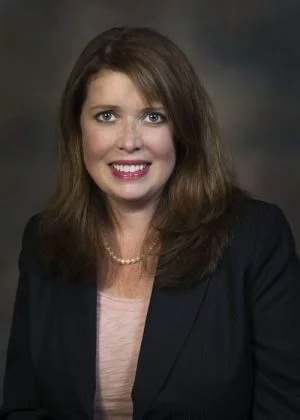In a healthcare system full of patient interactions, nurses provide the most frequent touch point. From the physician office to the hospital room to home and all points in between, nurses guide patients through the care experience with confidence and compassion. The impact of nursing is clear from both sides of the care equation, as a patient and as a provider. Nurses make up the largest group in healthcare, with nearly 4 million registered nurses in the United States.
Despite this pivotal position, many nurses don’t feel empowered to make a difference in larger healthcare initiatives surrounding safety and quality. In fact, a recent Joint Commission Center for Transforming Healthcare survey found that 1 out of 5 healthcare professionals believe their role is too small to impact the industry’s goal of zero harm.
As nurses, we are taught to focus carefully on the patient in front of us—and this is critically important. Each patient we encounter is a privilege and a chance to provide our best care. But nurses are also uniquely positioned to improve the healthcare system. In fact, if properly supported, front-line ownership—not merely empowerment—can drive high reliability healthcare, leading to foundational change in the industry that is felt far beyond the bedside.
There’s little question that nursing faces a number of obstacles today. The population of RNs is expected to increase 15% by 2026. While this increase is positive, it may not be enough to combat the growing shortage of nurses in the field and the aging population across the country. At the same time, the perception of this issue is growing: More than half of healthcare professionals in our recent study believe improving nurse-patient ratios will improve patient safety.
The nursing shortage is a real issue, but hiring more nurses isn’t the complete solution. Establishing high reliability healthcare processes and a true safety culture can have a significant effect on the care experience for both nurses and patients. High reliability healthcare would make a difference on both a higher level—on patient outcomes and nursing satisfaction—and on an individual level, through a nurse’s day-to-day experience.
Take the current system, for instance. Caregivers today may feel tasked with a higher patient load than they can handle. To meet this demand and care for every patient in their charge, nurses may feel forced to develop performance variations—workarounds—to keep up. An example of such a variation involves inability to use the mobile computer on wheels in certain areas of a unit, due to poor Wi-Fi connectivity. Nurses are forced to scan a medication and a copy of the barcode on the patient’s wristband out in the hallway, rather than at the bedside. The inclination to find solutions to system issues is natural and comes from the desire to help people. But working outside of typical process opens the door to risk that can have catastrophic consequences.
When the healthcare system creates situations where caregivers need to work outside of the protocol to be successful, the problem isn’t just a lack of staff: It’s a system that is failing our nurses, over and over, by forcing them to operate within processes that simply don’t work for the complexity of medicine and healthcare today.
Clinicians can lead the charge for change. High reliability healthcare drives a shift in mindset, behaviors, processes, and systems to support team members and empower the safest, highest quality care. While leadership engagement is crucial for success, nurses can play a key role in championing and helping build the right systems that set every caregiver up for success.
High reliability science makes it possible to rethink the processes nurses follow every day, creating a path for safe, high-quality care. With their innate understanding of those multiple touch points and opportunities for error, nurses are invaluable to improvement in this space. But we can’t benefit from their talents or wisdom if they aren’t engaged.
As nurses seek solutions to staffing and other challenges within their organizations, exploring high reliability science is a critical piece of that puzzle. Our caregivers can be exceptional advocates and drivers of improvement—and as an industry, we have a responsibility to help them be successful.
Coleen Smith is the director of high reliability initiatives for the Joint Commission Center for Transforming Healthcare.



















2 Comments.
I couldn’t agree more!
As we look at 20 years of the message of “To Err is Human,” your last sentence “our caregivers can be exceptional advocates and drivers of improvement-and as an industry, we have a responsibility to help them be successful” highlights another true statement “to create safety, and success is human.”
For 20 years we have forgotten that the very same fallible people who ERR are the same ones who adapt and create the necessary workarounds to fill gaps between work as imagined and work as done.
I believe empowering EVERYONE planning and delivering healthcare with the attitudes and actions of high reliability science is our best strategy for delivering the care we intend and patients deserve. Let’s get it done!
This is a great article most of the time it is our processes that create the difficulty